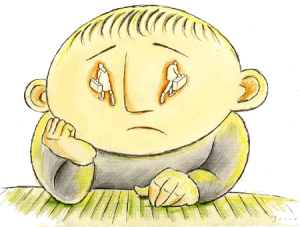Orthodontics at a young age offers your kids more than just a beautiful smile. It is primarily done to create a healthy bite that will benefit them for years to come. If your child is aged seven, it is time to see a kids’ orthodontist. Orthodontic problems are best resolved at this age when the issue is still developing. It is also the perfect time to look out for potential issues that could prove costly down the road.
Here are some common issues that orthodontists find in children:
1.Crowded Teeth
Crowded teeth happen when the space in your kid’s mouth is not enough for all of his or her teeth. This is caused by simultaneously growing teeth until they are pressed against each other, forcing them to be misaligned. Over time, it could lead to the development of gum disease.
Crowding can be fixed in many ways, although the installation of braces is the most common. Fixed braces made from metal or ceramic are usually used. An alternative is the removable clear aligner.
2. Spacing
Also known as diastema, spacing is the opposite of crowding. In this case, the teeth are too far apart, enough to affect chewing or speaking. It can also make oral hygiene more difficult than it should be.
Spacing can be caused by undersized teeth or an oversized labial frenum. The best ways to fix it are with dental bonding, veneers, and braces.
3. Underbite
An underbite is where the lower jaw outgrows the upper jaw such that the lower front teeth bite in front of the upper. Early detection by a kids’ orthodontist can eliminate it or reduce the need for costly surgery.
4. Overbite
Overbite or deep bite is the opposite of underbite, where the upper teeth are significantly farther than the lower teeth when biting. Similar to an underbite, this is caused by an imbalance in the jaws’ growth.
5. Crossbite
Usually, the upper teeth fit snugly over the lower teeth when biting. In a crossbite, the upper jaw is too narrow, causing the lower jaw to swing to one side for the back teeth to mesh.
6. Open Bite
In an open bite, the back teeth bite together, but they prevent the front teeth from closing. Similar to the other conditions, it is caused by an abnormal growth of the jaws. It can also cause difficulty in chewing, biting, and speaking.
7. Buck Teeth
Also known as “rabbit teeth,” this is caused by too much growth on the upper jaw, causing it to stick out much further than the lower jaw. In other cases, there is insufficient growth of the lower jaw.
In some instances, this condition can be characterised as cute or attractive. However, it may be prone to incidental contact or impact, causing damage.
8. Impacted Teeth
Teeth become impacted when they do not have enough space to erupt, or if they erupt in the wrong position. If left untreated, they can cause problems that are more complex to treat.
Your kids’ teeth are still not permanent, but this is no reason to delay dental care. Do not wait for them to become teenagers before seeing a kids’ orthodontist. By this time, simple problems that could have been easily remedied would end up causing more problems.


